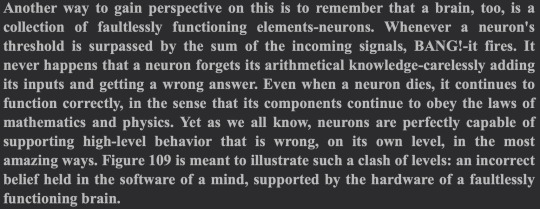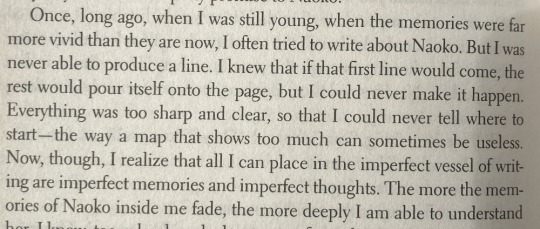#metamathematics
Text








body/flesh as an inescapable filter through which all information is sent before it is committed to memory, perfection of physical function as dissociated from the imperfection of the symbols that emerge at the highest level of abstraction
murakami / hofstadter
7 notes
·
View notes
Text
Footjob and Secret Cum from Neighbor
Hitomi Tanaka tell you what to do
Ninfeta enfia pau dotado no cu e sorrir de tesao
Nubile Films - Get You Wet
Yanks Amber Chase Peeping Fantasy
PREVIEW CAUGHT JERKING WITH MY SISTERS PANTIES JOI JESSIE LEE PIERCE TABOO ROLEPLAY POV
Novinha tocando siririca no Banheiro
Strippers fuck each other with a dildo
Desi village wife nude dance
Skinny Tallia Skye toys her ass and jerks her dick hot shemale fucks shemale
#diversifies#isographical#cloverleafs#previsibly#smaug#sugar-loving#grandmother#stone-horse#Dyassic#restless#snow-wrought#maddled#raked#Pelligrini#browbeaten#psychosynthetic#clerkage#ill-written#metamathematics#suricat
0 notes
Text
Intuitively odd, though not surprising, to me that first-order logic can't directly refer to objects of a theory (uniquely) satisfying a given property.
Like. Suppose P(x) is a predicate in the language of ZFC free in x and f : A -> B is a function as formalized in ZFC. For any element a in A, we know that there is a unique element b in B such that (a, b) is in f. We informally call this unique element f(a). But you can't actually do this formally, you can't write P(f(a)) in FOL. If you want to claim that P holds of f(a), for some fixed a, you have to write ∀x((a, x) ∈ f -> P(x)). In fact it's worse than this, because you can't "directly" reference a or f or the ordered pair (a, x) either. The language of ZFC has no function symbols, so all these things are only specified by theory-internal functions. So you have to spell out the definition of these things with ∀ and -> too.
At least, unless I'm missing something really obvious.
Anyway, there are probably metamathematical reasons why it must be done this way, but I do find myself wishing FOL had some kind of "unique object" operator ι, interpreted so that for formula φ(x) in one free variable, ι(φ) is a term referring to the unique object satisfying φ if one exists. Actually this exact thing is what's done in natural language semantics for interpreting definites. The universe of discourse is usually extended with a null object # which ι(φ) references if φ lacks a unique referent, and in these treatments Kleene three-valued logic is used such that ⟦φ⟧(#) = U for any formula φ.
Is there a reason this would be undesirable in standard FOL? I suppose if nothing else it makes the formalism more complicated without adding any expressive power.
18 notes
·
View notes
Text
reggie's recent metamathematics posting has me thinking i probably am just a platonist for the natural numbers. "God made the natural numbers; all else is the work of man". maybe some logic too
14 notes
·
View notes
Note

Literally me trying to figure out what to say before realizing I always meant to find out which kind of math(s). I never got to finish any of that stuff in school (because school finished me first), but I always liked the weirder more abstract stuff that had fewer practical applications. Like calculus is incredibly useful but was always kind of boring to me, but I totally loved metalogic/metamathematics.
(and also me trying to figure out possible answers to the one in the screenshot: "fuck killing, marry marrying, and kill fucking: a sex-repulsed allo ace who thinks a little murder is ok as a treat")
I was really into the theoretical stuff, actually! My favorite classes were Computational Theory (basically drawing out mind maps that represented how a computer worked, and working backwards over the whole semester from modern computers to Turing’s theoretical Turing Machine, with the single read/write head and an infinite tape), Number Theory, Cryptography, those kinds of things!
(I think I would fuck marrying, marry fucking, and kill killing. Lmao. Also sorry for the late reply, I’ve been so spoonless)
2 notes
·
View notes
Note
Who came closest to solve the continuum hypothesis? What does it take?
The continuum hypothesis: If X is a subset of the real numbers, then either X has the same cardinality as the real numbers, or X is countable.¹
What an interesting question! Firstly, most importantly, we have 'solved' the continuum hypothesis! It is independent of ZFC.
In 1940 Kurt Gödel showed that if ZFC is consistent, then ZFC+CH is consistent using his Constructible Universe model L. Essentially he showed that if V is a model of set theory, then picking out only the 'constructible' sets will give you a submodel L in which the continuum hypothesis holds.
Paul Cohen later, in 1963, showed that if ZFC is consistent, then ZFC+¬CH is consistent using forcing. Essentially he showed that if V is a (countable²) model of set theory, then one can construct an extension V[G] to V in which the continuum hypothesis fails. He does this by adding in lots of 'generic' real numbers, as many as you like, so that the size of R (the real numbers) increases while not changing the value of א1.
Technically speaking, forcing is the more robust method here, since one can also use forcing to take any model V and construct an extension V[G] in which the continuum hypothesis holds again, while Gödel's method can only 'go down'.
Footnotes.
¹This retelling of the continuum hypothesis is equivalent to the usual statement that 2^{א0}=א1 under AC, but naturally it is not in general equivalent (e.g. by this definition any model of ZF+AD would satisfy CH). I am using it here only because it seems like the more approachable way to say it.
²Cohen's methods can be applied to general models of ZFC (if we think hard enough about metamathematics), but it is enough to consider only countable models since by the Downward Löwenheim-Skolem, if ZFC has a model then it has a countable model. The slightly trickier part is finding a transitive inner model, but that also works out (apparently you can just use V_alpha for some countable ordinal alpha!).
11 notes
·
View notes
Text
TO READ
Whitehead's The Principle of Relativity
Danzig's Number The Language of Science
Weil's Waiting For God
Language in Thought and Action
On Looking: Eleven Walks Through Expert Eyes
Il deserto dei Tartari
Logic, Semantics, Metamathematics: Papers from 1923 to 1938 by Alfred Tarski
2 notes
·
View notes
Text
The Mind, Mathematics And Computing Consciousness
The eccentric logician Kurt Gödel revolutionized the study of mathematics with his famous incompleteness theorem, but the most compelling implications of his hypothesis might be in what it means for the study of the mind and consciousness.
ToKTutor's insight:
may2023 Q4 Gödel numbering, metamathematics & self-modelling: knowledge of the axiomatic nature of maths gives experts the power to infer how the brain generates conscious experience...
0 notes
Text
Also a mathematician, Onishi approached his work in this light: “To know the conditions of the object’s formation, this is the purpose of my photography, which is founded on a desire to pursue metamathematic propositions such as ‘the possibility of existence’ and ‘the possibility of optional choice.’”
Mathematical Structures, made in collaboration with MEM, Tokyo, is the first comprehensive book to present Onishi’s startlingly original vision.
“A Metamathematical Proposition is like a montage in a David Lynch movie or a fever dream in sepia and black ink: some clear views of a domestic life or of restful places like a shore’s edge or temple, then close-ups of chains, then trees ominous as insects and many things too messy to be distinguished and all the compacting double, triple, quadruple exposures – the images layered one on the other seemingly through an unknown, but inherently elegant logic. This is not what the artist intended, but if Dead of Night is depictions of car wrecks at rest after their follies, then A Metamathematical Proposition is the images that flashed before the drivers’ eyes as they crashed.
“Choice experiments, rather than terrible ‘happy accidents.’
“If you think the mind is a cryptic cage cut up and presented like a poem (lots of strong images, a strange sense of a deeper, though elusive and often changeable meaning), that order is an illusion or that the experimental is just a great good time, then this will slake you.” – Christopher Johnson
0 notes
Photo





Logicism as a philosophy of mathematics, logicism as a serious program of metamathematics, I hear, because of the incompleteness theorems of mathematics of Gödel and others, and because of ZFC overturning Russellian type theory. (Here I am referencing the Stanford Encyclopedia of Philosophy's article on "Logicism and Neo-Logicism".) Regardless, I still hold some interest in the logical work of Bertrand Russell and Bertrand Russell, especially as I am interested in how it connects up to their respective philosophical systems - Russell's neutral monism and Whitehead's metaphysics of process (as given in "Process and Reality", and other books, and so ably explicated in Isabelle Stengers' “Thinking With Whitehead”, originally published “Penser avec Whitehead” in French). Even despite that, the whole system of the ramified theory of types sounds like an excellent tool to make my thinking in mathematics more discerning.
To deal with the issue of self-reference, R&W build up a system in which each proposition has a given order, and can only take lower order functions as arguments. This is the basic theory of types. (I wonder what this has to do with the first-order, second-order, ..., nth order logic studied by logicians and mathematicians.) Of course, this does not completely get rid of self-reference. And there are issues with statements like the law of the excluded middle, which we want to apply to all statements, but that would be impossible in this system.
There are still complications with variables, so now in the ramified theory of types the order of the main function is determined by the highest order of any variable in it, whether its own or of an inner function. There is now a creation of a new hierarchy, too, an infinite number of sublevels. In the ramified theory types, we can make only some statements about some, not all the functions that can take an object of any order as an argument. R&W fix it with the axiom of reducibility (which I hear has had some controversy, among logicians and mathematicians and philosophers), by collapsing all the levels into one level. So the statement "all hereditary properties n has" now becomes a conjunction of the statements "n has a hereditary property x" and "n has a hereditary property y" and so on. While I am sure this is all well and good, I admit this makes me feel a little uncomfortable - is it really possible to list all properties, hereditary or not, of a particular number? I worry it might run into a problem with Gödel-ish arguments. Hmpf.
The end here is R&W's "no-class" theory of classes, where classes here are simulated by prepositions. I now suppose there no longer can be collections of sets anymore (eg the theorems of analysis that talk about countable and uncountable covers of sets, etc.) and segues somewhat into Russell's theory of descriptions.
0 notes
Text
Seems to me that all the time in math, one has to prove that some definition is well-formed before making it. You know, a simple case might be that you have some function f : X -> Y, and some function G : U -> Z where U is a subset of Y, and you have to prove that Image(f) ⊆ U so that you can make the definition h = g ∘ f. But am I wrong in saying that, due to the distinction between object- and meta-language, you can't actually state that this definition is well-formed within whatever foundational theory you're working in? I mean, you can state "Image(f) ⊆ U", but the leap from "Image(f) ⊆ U" to "h is well-defined" happens in the meta-theory, not the theory, right? This feels very frustrating, like a vital inference is left out of mathematics entirely and entrusted to metamathematics. It disconcerts me.
23 notes
·
View notes
Text

I guess I'm on the verge of silly!
We will start at the island called "meta-mathematics", primarily at the lakes of formal logic, and continue to the borderlands of pure mathematics to further migrate towards the hills of applied mathematics, climb the mountains of theoretical physics, and continue our journey towards the cliffs of quantum computing, straight into the abyss of cognitive science.
While we drown in analogies, we will wake up again at the start of this non-orientable surface; and each time we return we will have gained more insight to infinitesimally approach infinity - what a venture!
And don't forget: Enjoy the ride!
#analogies#analogies everywhere#math#mathematics#connecting the dots#metamathematics#pure mathematics#pure math#applied math#applied mathematics#formal logic#logic#mathematical logic#cognitive science#cog sci#math cog sci#quantum computing#quantum mechanics#physics#theoretical physics#science#metaphor#metaphors#non orientable surface#mobius strip#gödels incompleteness#godels incompleteness theorem#niels bohr#shit academics say#theoretical physcis
60 notes
·
View notes
Text

Ambigram depicting Gödel's Incompleteness
So I played bit with concepts and words, and somehow I could manage to depict main aspects of Gödel's Incompleteness in that ambigram.
A simplified version of Gödel's incompleteness theoreoms:
A recursive axiomatic system is either inconsistent and complete, due to proving itself with its own rules - hence, being self-referent and thus inconsistent, or it is consistent, but incomplete, due to not being proven.
#gödels incompleteness theorems#godels incompleteness#incompleteness#logic#mathematical logic#formal logic#metamathematics#meta mathematics#math#mathematics#inconsistent#paradox#oxymoron#contradiction#pleonasm#tautology#transcendence of a paradox#parody of paradoxes
24 notes
·
View notes
Link
March 7, 2022
1Mathematics and Physics Have the Same Foundations
2The Underlying Structure of Mathematics and Physics
3The Metamodeling of Axiomatic Mathematics
4Simple Examples with Mathematical Interpretations
5Metamathematical Space
6The Issue of Generated Variables
7Rules Applied to Rules
8Accumulative Evolution
9Accumulative String Systems
10The Case of Hypergraphs
11Proofs in Accumulative Systems
12Beyond Substitution: Cosubstitution and Bisubstitution
13Some First Metamathematical Phenomenology
14Relations to Automated Theorem Proving
15Axiom Systems of Present-Day Mathematics
16The Model-Theoretic Perspective
17Axiom Systems in the Wild
18The Topology of Proof Space
19Time, Timelessness and Entailment Fabrics
20The Notion of Truth
21What Can Human Mathematics Be Like?
22Going below Axiomatic Mathematics
23The Physicalized Laws of Mathematics
24Uniformity and Motion in Metamathematical Space
25Gravitational and Relativistic Effects in Metamathematics
26Empirical Metamathematics
27Invented or Discovered? How Math Relates to Humans
28What Axioms Can There Be for Human Mathematics?
29Counting the Emes of Mathematics and Physics
30Some Historical (and Philosophical) Background
31Implications for the Future of Mathematics
Some Personal History: The Evolution of These Ideas
Notes & Thanks
Graphical Key
Glossary
#First-Principles#Fundamental#Foundational#Physics#Mathematics#Time#Space#Causality#Ruliad#Metamathematics#Stephen Wolfram
5 notes
·
View notes